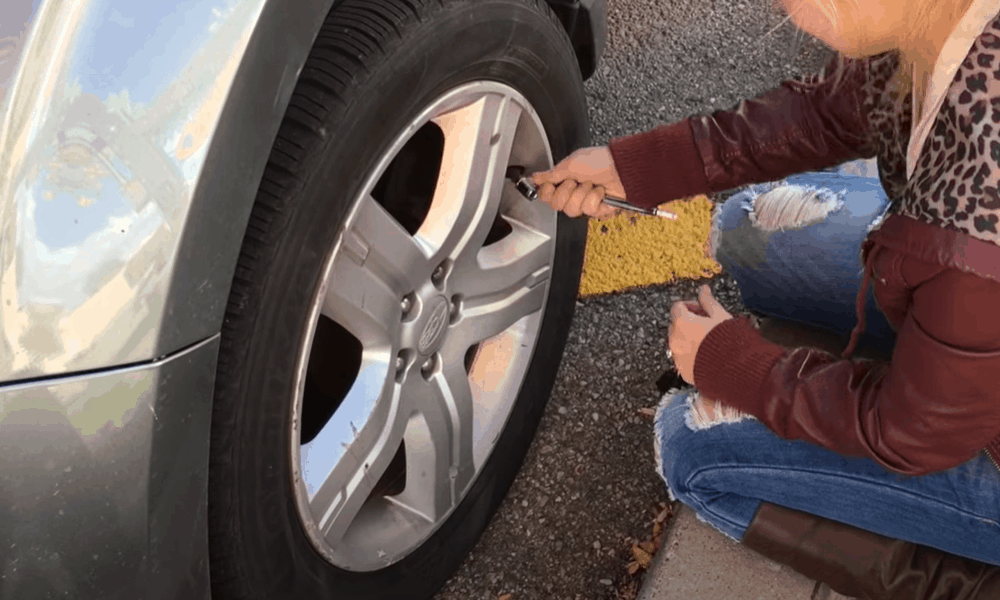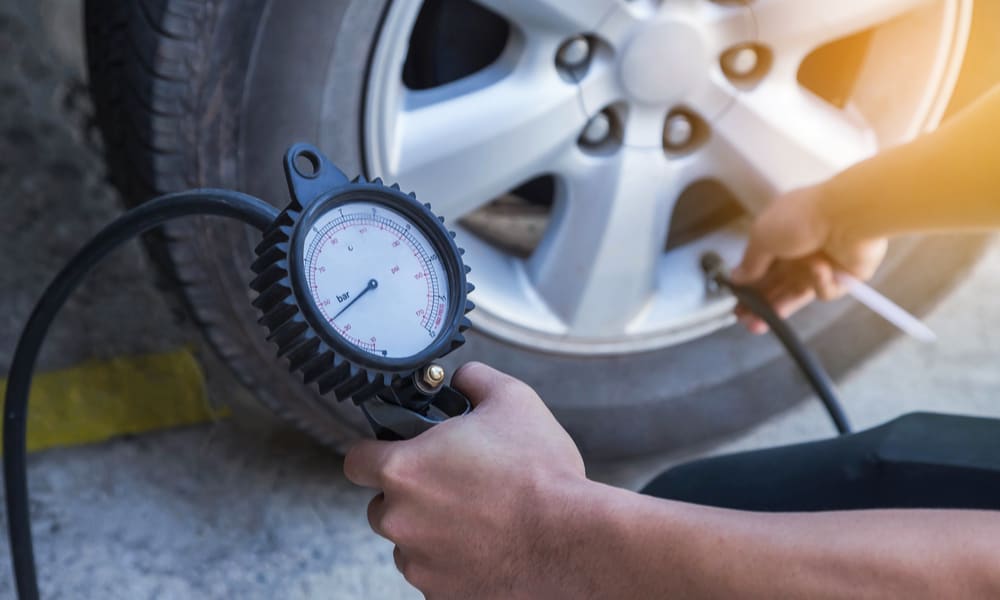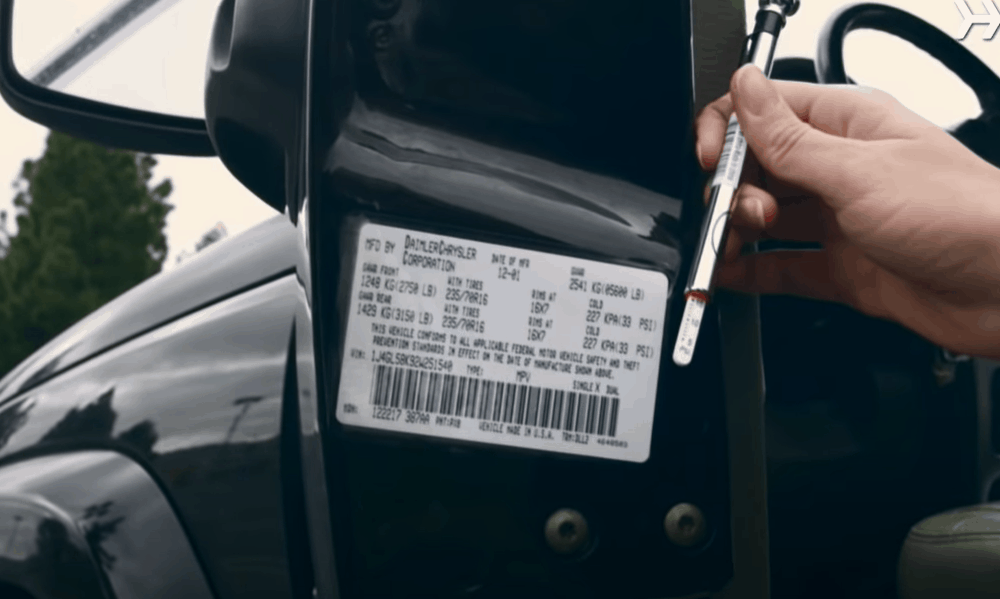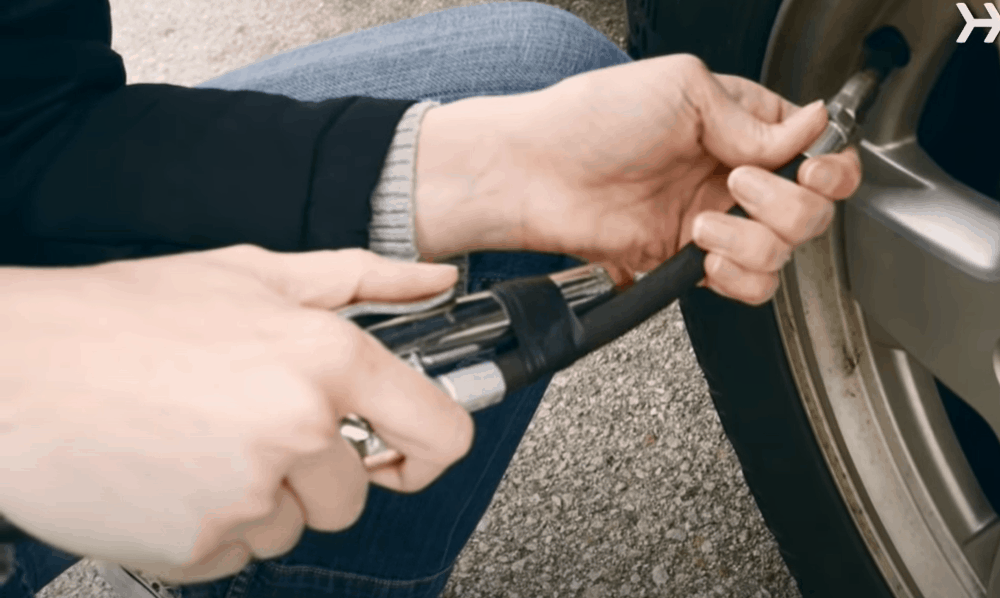Not many things are worse than driving with low tire pressure. Properly inflating your tires is crucial for safety, especially when you go on a long road trip or drive on the highway.
Fortunately, doing this requires only a few minutes of your time and little to no knowledge in cars or mechanics. You can do it while on the road, or when you visit a gas station. Here is everything you need to do to fix the low tire pressure.
Repercussions of Driving with Low Tire Pressure

There are a few reasons why car and tire manufacturers recommend drivers to keep the tires properly inflated. And, the primary reason for that is safety.
When the pressure in the tires is low, the overall stability will be worse than with properly inflated tires. That’s especially true if your tires are a lot of PSI (Bar) under the recommended tire pressure.
More accurately, because the tires are softer, the handling will be less responsive – your car will feel heavier. Also, the vehicle becomes unstable at very low speeds, which is only exaggerated on the highway.
Furthermore, underinflated tires worsen the performance and fuel economy of your car. While you probably won’t be able to feel the performance decrease, the “mpg” meter on your car will show much lower numbers.
On average, the fuel consumption of your car will increase by 0.2% for every PSI of pressure dropped. This means that if the pressure falls from 32 PSI to 20 PSI, you will experience around 1.5% worse fuel economy.
Finally, driving on low tire pressure can accelerate the tread wear of your tires. Accelerated wear can quickly render your tires useless, especially for driving on wet surfaces. Moreover, this means that you’ll replace the tires sooner, which might cost you in the long run.
How to Fill Your Tires with Air
Inflating the tires on your car is quick and straightforward. However, to do it properly, it’s best to prepare well.
First, make sure that your tires are cold when inflating and measuring the pressure. It would be best if you did it in the morning, or only after driving a few miles. Never measure the pressure after a long ride.
Then, prepare with some tools. To check the pressure on your tires, you’ll need a tire pressure gauge. Nowadays, gauges are very inexpensive, and they are also tiny so that you can keep it inside the area for the spare tire.
Then, you will also need an air pump to inflate the tire. Many types of air pumps exist, including hand-operated, foot-operated, and an automatic air pump.
The hand- and -foot-operated air pumps are less expensive, but they also require much more force and take more time.
Automatic air pumps usually connect to the 12V socket in your vehicle, which makes the whole job faster and much more convenient.
Now, let’s see what’s needed to inflate your tires properly.
Step 1. Remove the Valve Stem Cap

Unscrew the plastic cap that sits over the valve stem. On steel rims with wheel covers, you might also need to remove the cover. Place the plastic cap in a safe place – you’ll need to screw it in place later.
Otherwise, dirt and debris might get into the valve stem, which can get in the way the next time you want to inflate or measure the pressure in your tires.
Step 2. Use a Tire Pressure Gauge to Measure the Existing Pressure

Place the end of the hose of the tire gauge on the valve stem. Push as hard as needed, so there is no hissing noise. Then, check the reading – on analog gauges, the needle should jump immediately. On digital gauges, though, you might need to push a button to activate it.
Step 3. Check the Recommended Tire Pressure for Your Car

Once you measured the pressure inside the tire, it’s best to compare it to the recommended pressure first. You can find the recommended tire pressure on a sticker on the sill of the driver’s or passenger’s door. If you can’t find it there, it’s best to refer to the owner’s manual.
Don’t inflate the tire if the tire pressure is equal to the recommended one.
Step 4. Inflate the Tires Using an Air Pump

Place the end of the hose on the valve stem and make sure that it clamps in place. If you hear a hissing sound, you won’t be able to inflate the tire. On some air pumps, you might need to hold the tip of the hose firmly pressed against the valve stem.
Then, start pumping for a while. Check the tire pressure on every 15-30 seconds, as overinflated tires will also not perform well. And, even if you overinflate the tire, don’t worry. Press the core of the valve stem with a sharp object, and the tire will start deflating.
Once you reach the recommended pressure, place the plastic cap back over the valve stem.
Step 5. Inflate the Tires at the Nearest Gas Station (Optional)

You can also fix low tire pressure at the nearest gas station. The air pumps at gas stations will automatically reach the desired pressure. Just enter the recommended pressure on the apparatus, put the hose on the valve stem, and wait until you hear the sound signal.
What to Do if the TPMS Light is Still Illuminated?
When one of your tires is underinflated, the TPMS (Tire Pressure Monitoring System) on your dashboard will illuminate. As soon as you inflate the tire, though, the light should go out. However, in many cases, the light might not go out immediately. Here is what you need to do to rectify that.
Drive for a While
Driving for around 5-10 miles at speeds of 40-50 mph should be enough for the TPMS light to go out. If it doesn’t go out, make sure to recheck the pressure.
Reset the TPMS Light
If you are sure that the tires are correctly inflated, you can reset the TPMS light. Most vehicles have a reset button on the lower part of the steering wheel column. If you can’t find it there, consult your user’s manual.
Then, turn the key to the “ON” position, push the button, and hold it until the TPMS light blinks three times. It should stop shining after.
Conclusion
In this day and age, fixing a low tire pressure is very easy and straightforward. Every gas station has an air pump, and you can even purchase an automatic one on the cheap and keep it in the trunk. There is simply no justification in driving with low tire pressure, precisely because it hurts safety.
And, even if this article didn’t help you find a solution for your underinflated tires, feel free to put a question down below. I’m sure we can find a solution to your issue. And, crucially, stay safe!
The post 5 Easy Steps to Fix Low Tire Pressure appeared first on Smart Motorist.
source https://www.smartmotorist.com/how-to-fix-low-tire-pressure
No comments:
Post a Comment